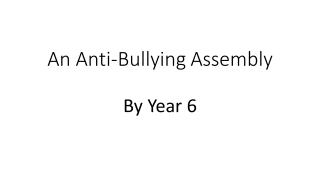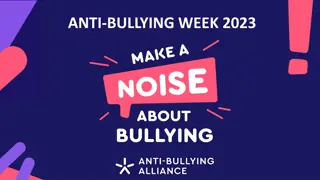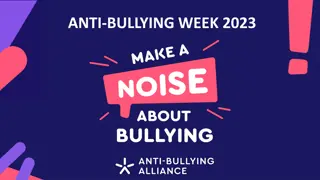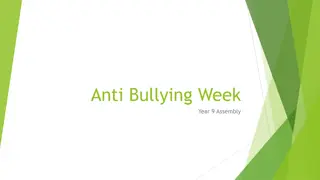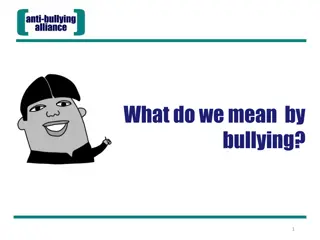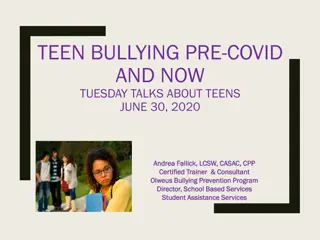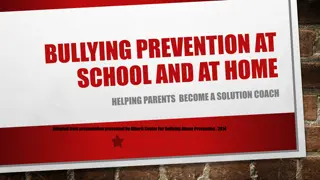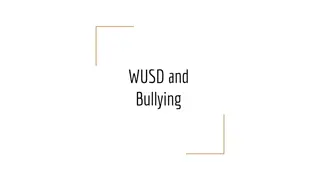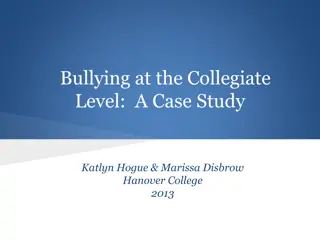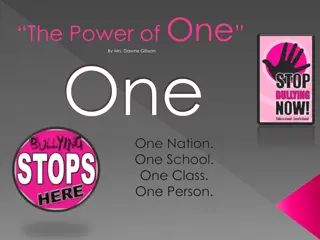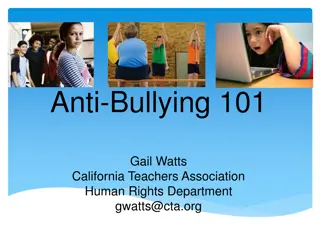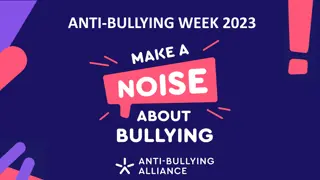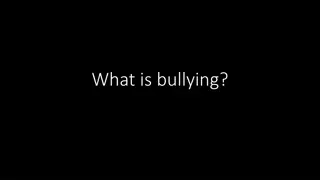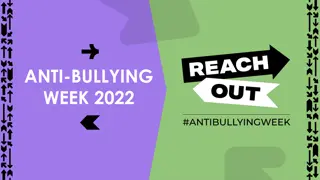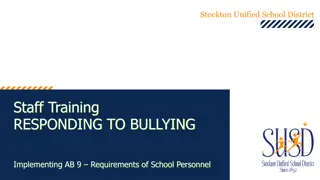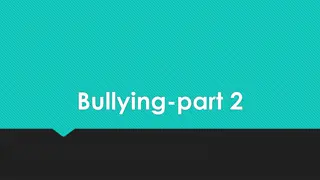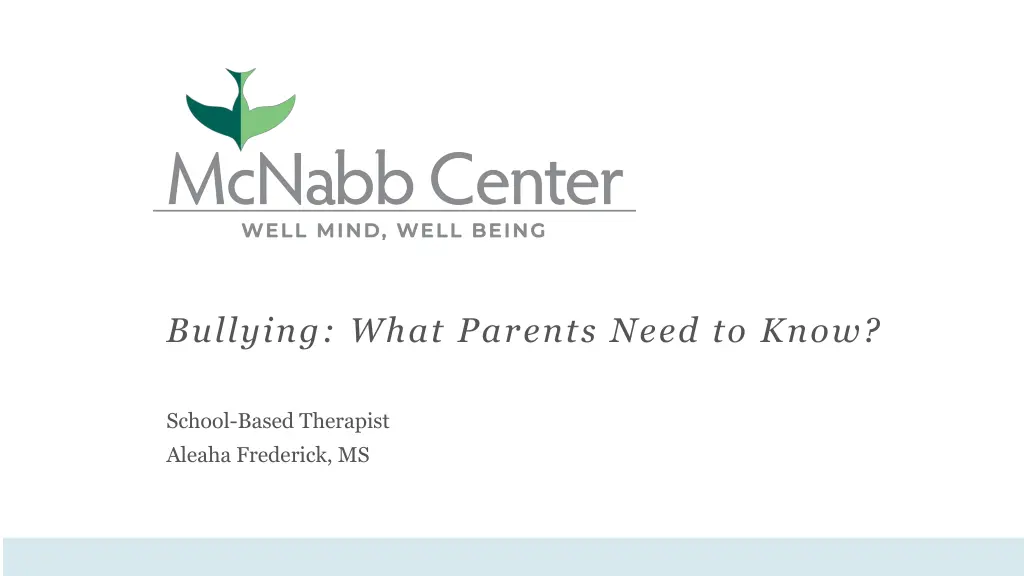
Understanding Bullying: What Parents Should Know
Discover the various types of bullying, warning signs that your child may be bullied, and understanding the difference between conflict and bullying. Gain insights on how to identify and address bullying behaviors effectively to support your child's well-being and safety.
Uploaded on | 1 Views
Download Presentation

Please find below an Image/Link to download the presentation.
The content on the website is provided AS IS for your information and personal use only. It may not be sold, licensed, or shared on other websites without obtaining consent from the author. If you encounter any issues during the download, it is possible that the publisher has removed the file from their server.
You are allowed to download the files provided on this website for personal or commercial use, subject to the condition that they are used lawfully. All files are the property of their respective owners.
The content on the website is provided AS IS for your information and personal use only. It may not be sold, licensed, or shared on other websites without obtaining consent from the author.
E N D
Presentation Transcript
Bullying: What Parents Need to Know? School-Based Therapist Aleaha Frederick, MS
What is bullying? Bullying is unwanted, aggressive behavior among school aged children that involves a real or perceived power imbalance. The behavior is repeated, or has the potential to be repeated, over time.
Types of Bullying Verbal Bullying: when an individual uses verbal language to gain power over his or her peers (Teasing, Name-calling, taunting, threatening to cause harm) Social Bullying: sometimes referred to as relational bullying, involves hurting someone s reputation or relationships (Leaving someone out on purpose, telling other children not to be friends with someone, spreading rumors about some) Physical Bullying: involves hurting a person s body or possessions (hitting/kicking/pinching, spitting, tripping/pushing, taking or breaking someone s things) Cyber Bullying: intentional and repeated harm inflicted through the use of computers, phone, and other electronic devices (Abusive or hurtful texts, emails or posts, images or videos, deliberately excluding others online, nasty gossip or rumors, and imitating others online or using their log in)
Conflict/Confrontation Bullying Imbalance of power Repeated action Purposeful intent (Goal is to hurt, harm, or humiliate) Victim reacts strongly Bully is often seeking power No remorse Not motivated to problem solve. Equal power Happens occasionally No intent to harm Equal emotional reaction Not seeking power/attention Remorse Effort to solve the problem Disagreement or argument in which both sides express their views
Warning Signs Warning signs your child may be bullied: Avoiding or fear of going to school Sudden failing grades Frequent health complaints- headaches, stomachaches Withdrawing or losing interest in activities with friends Feeling, sad, moody, anxious, depressed, withdrawn, helpless Unexplained injuries Damaged or missing clothing or items Losing items of value- iPod, money, jewelry Trouble sleeping- or frequent nightmares Changes in eating habits Avoiding or spending excessive time on computer/phone Significant mood changes after using the computer/phone Become aggressive or disruptive May begin to bully other kids or siblings
How to help your child if you suspect your child is being bullied? Talk with your child; Give a clear message that bullying is never okay Cultivate and maintain open, candid communication Conversation starters: There have been a lot of news stories about people being bullied lately, do you know of people dealing with this? Have you ever had any problems with people on the internet? Has anyone ever bothered or threatened you? Do you know of kids who are picked on in school? How can I help you make it stop, without embarrassing you? Your child may not always talk so observe and listen Observe their interactions with friends Volunteer at the school Attend school events Pay attention to changes Empathize with your child. Help them understand bullying is wrong and it is not their fault. Document bullying incidents. Be a role model. Encourage your child to pursue interest and activities to build more positive friendships Help your child develop positive strategies and skills for handling bullying. Keep in contact with your child s teachers Contact the school counselors and school administration for additional support and suggestions if the situation continues
Resources https://www.stopbullying.gov/resources/external https://www.pacer.org/bullying/ https://bullyfreeworld-bully.nationbuilder.com/

